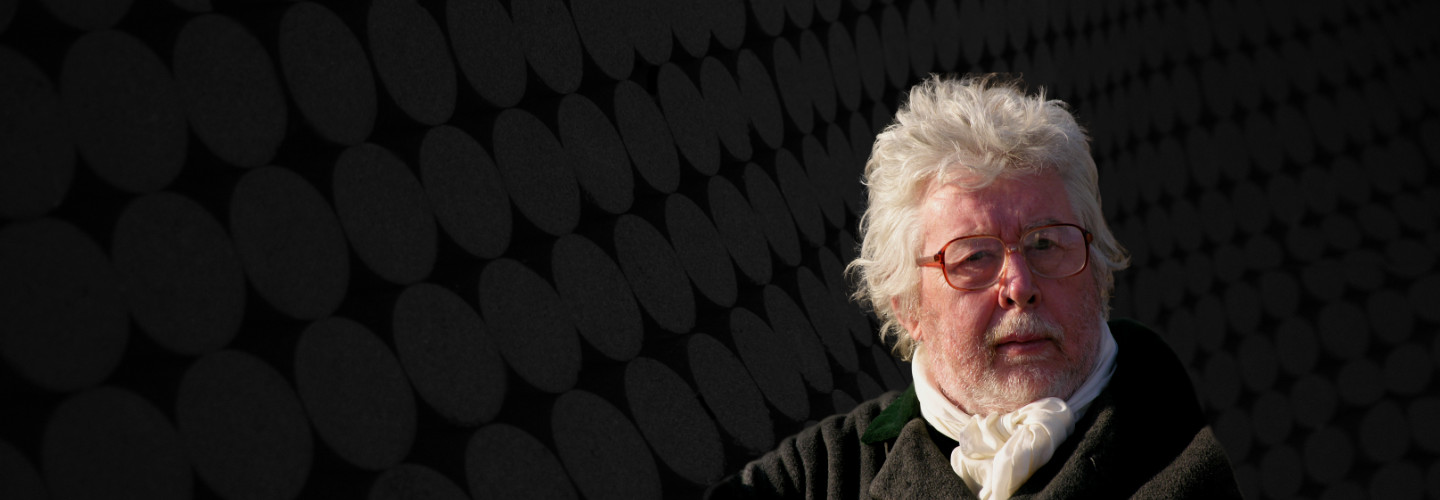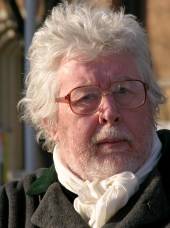


Sir Harrison Birtwistle
Love Cries
Short instrumentation: 2 2 2 2 - 4 2 0 2 - perc(3), cimb, acc, sax(2), str(32 0 12 12 8)
Duration: 40'
Bearbeitet von: Michael Berkeley
Gesangstext: Russell Hoban
Solos:
soprano
mezzo-soprano
tenor
Instrumentation details:
1. fl (+ Afl, picc), 2. fl (+ picc), 1. ob, 2. ob (+ c.a), 1. cl(Bb) (+ cl(Eb), cl(A)), 2. cl(Bb) (+ cl(Eb), bass cl(Bb)), alto sax (+ bar.sax, soprano sax), tenor sax, 1. bs, 2. bs (+ cbsn), 4 hr(F), 1. tpt(C) (+ kltpt), 2. tpt(C) (+ kltpt), 2 tuba, perc(3), cimb, acc, str (32 0 12 12 8)
Love Cries is derived from Birtwistle's 1994 opera, The Second Mrs Kong, first performed in Glyndebourne, in just the same way that the orchestral Gawain's Journey related to its predecessor. Three love duets form the pivots of the two-act structure of Mrs Kong, and they are the core of this continuous forty-minute span of music which, at Birtwistle's suggestion, Michael Berkeley has extracted from the opera to create the new concert work.
The world that the writer Russell Hoban invented for the libretto of Mrs Kong brings together characters who are both mythical and human in a surreal, touching and comic way. The flavour is very different from that of Birtwistle's previous operas, but as in all his stage works, from Punch and Judy to Gawain, the thread that runs through the scenario is a journey towards self-knowledge. King Kong, who has been consigned to the World of Shadows since his appearance in the famous 1933 RKO film, and is still, as another character in the opera says, "trying to work out what he is", travels across the Sea of Memory to find Pearl, the girl with the pearl earring immortalised in Vermeer's portrait. He arrives in present-day London, and eventually tracks down Pearl, who has become part of the furnishings in the apartment of a wealthy stockbroker. Yet though they are together at last and their love for each other is real enough, the relationship is inescapably doomed: a cinema character who only ever existed as an idea and a girl who achieved immortality through the countless reproductions of Vermeer's masterpiece will always be confined to their utterly separate worlds.
In Love Cries, the three duets for Kong and Pearl are heard in the same order in which they appear in the opera. But to provide a continuity and a context for these passionate set pieces Berkeley has introduced a third voice, a mezzo-soprano, who combines elements of two roles from Mrs Kong: she is by turns Inanna, a dead former beauty queen who is another denizen of the World of Shadows and the Mirror, the "voice of reflection", who carries Pearl from seventeenth-century Delft, where she was painted by Vermeer, to a world where she will find the "king who never was". It is Inanna/Mirror who begins Love Cries, with music that Berkeley has recomposed from the very end of the opera, turning its falling woodwind motif upside down, and who leads Pearl into the first duet, taken from the end of the second scene of Act 1, as she listens to Kong's "lost and lonely call" from the World of Shadows.
By the last scene of the first act, Pearl has reached London and the penthouse flat in Mammon Tower; again prompted by the Mirror, she searches for Kong using a computer. In the opera her messages are seen rather than heard, typed rhythmically onto a giant video screen; here they are spoken, preserving the rhythms, by Inanna/Mirror. Kong and Pearl declare their love for each other; he is not a giant ape, he is only the idea of one, but his love for her is "fifty feet high"; she will "travel the world in postcards" until she finds him. Inanna's music then provides the link to the last duet, taken from the final scene of the opera. Pearl waits for Kong to arrive, but when he does so, the Mirror tells them the awful truth: "This is the moment when reality begins. You cannot have each other." But Love Cries ends, as the opera does, with the most ecstatic and passionate music Birtwistle has written to date; Kong and Pearl proclaim the reality of their love, while the Mirror reminds them that "It is not love that moves the world from night to morning, it is the longing for what cannot be."
Andrew Clements
